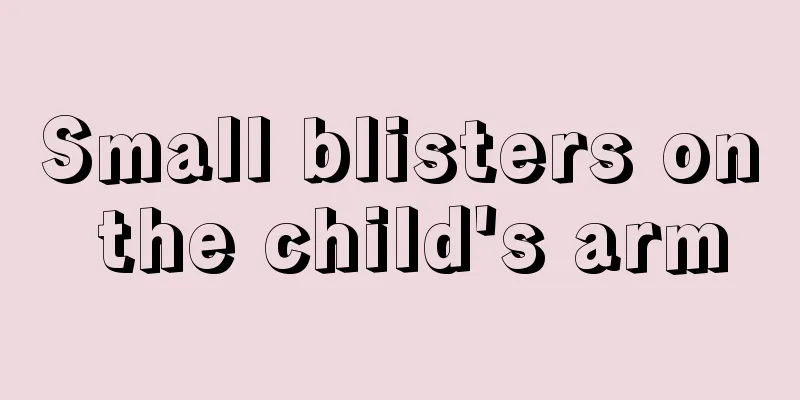Small blisters on the child's arm

|
If you find small blisters on your child's arm, do not apply any medicine on their skin at home. This will cause secondary damage to their skin. You must choose the most appropriate treatment measures based on their clinical symptoms. Most of them require glucocorticoid drugs for treatment, which are very effective. 1. Diagnosis: The diagnosis can be made based on clinical symptoms. Large blisters occur on normal-looking skin and mucous membranes, and there is epidermal peeling, which is more common in skin wrinkles. It is more common in middle-aged people. The fluid in the blisters is tissue fluid. Long-term friction causes the permeability of some capillaries to increase, and some plasma proteins enter the tissue fluid, which in turn causes the osmotic pressure of the tissue fluid to increase, thereby increasing the amount of tissue fluid. 2. Identification: Differential diagnosis of blisters: 1. Impetigo: It often occurs around the nose and lips or exposed parts of the limbs. It is considered as herpes, which then turns into pustules and then scabs. It does not appear in batches, is not seen in the mucous membranes, and has no systemic symptoms. 2. Papular urticaria: It is a spindle-shaped edematous red papule, the size of a peanut, with a needle-tip or millet-sized papulovesicle or blister in the center, which feels hard and very itchy. Distributed on the limbs or trunk, not involving the head or mouth, and no crusting. 3. Herpes zoster: The herpes is distributed along a certain nerve trunk pathway, is asymmetrical, does not exceed the midline of the trunk, and has significant local burning pain. 4. Smallpox: Severe chickenpox is similar to mild smallpox. 5. Other viral infections: Herpes simplex virus infection can also cause varicella-like skin lesions. This type of disseminated herpes simplex virus infection is often secondary to skin diseases such as atopic dermatitis or eczema, and the diagnosis depends on the results of virus isolation. In recent years, it has been found that enterovirus, especially Coxsackievirus group A, can cause widespread varicella-like rash, which usually occurs in late summer and early autumn when enterovirus is prevalent, and is often accompanied by lesions in the throat, palms, and soles of the feet. This helps to distinguish varicella from enterovirus infection. 5. Varicella: It is a primary infection caused by the varicella-zoster virus. It is an acute infectious skin disease characterized by mild systemic symptoms and the appearance of macules, papules, blisters and scabs in batches on the skin and mucous membranes. It is more common in children, is highly contagious, and can easily cause epidemics in small areas. After recovery, the patient can obtain lifelong immunity. [1] |
<<: Depressed skull fractures in children
>>: What to do and how to treat a child's red face
Recommend
How to treat chronic tonsillitis in children
Chronic tonsillitis in children is a common disea...
Treatment of baby's pharyngeal congestion
In the new life, everyone pays attention to scien...
What should I do if my child has a fever or pneumonia?
A child's fever is a big deal, and if not han...
How long does it take for an ulna fracture to heal?
My child is five years old this year. Some time a...
What medicine should children take for nausea and vomiting?
Most babies have weak spleen and stomach when the...
The dangers of acupuncture for children
In fact, acupuncture as a treatment method can al...
What are the things to prepare for the first birthday celebration?
When there is a baby in the family, every stage o...
Baby's ear is red and swollen
The redness and swelling of the outer contour of ...
The child has a fever and has yellow eye mucus
It is a very common symptom in daily life for chi...
What to do if the child has a fever of 385 degrees
Fever is very painful for many people, because it...
Beware of low immunity in children in spring, let your children eat several foods in rotation
The temperature rises in spring and our body temp...
What should children eat after phimosis surgery?
If your baby is a boy, you must pay attention to ...
What medicine should my baby take for nasal congestion and cough?
It is normal for children to have some diseases d...
Symptoms of hemangioma in children
Hemangioma is a very common disease. There are ma...
Can myopia among middle school students be cured?
As the academic pressure on today's middle sc...









